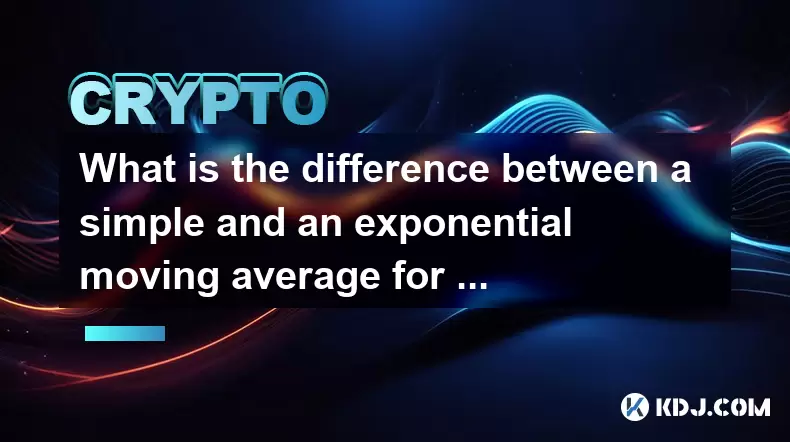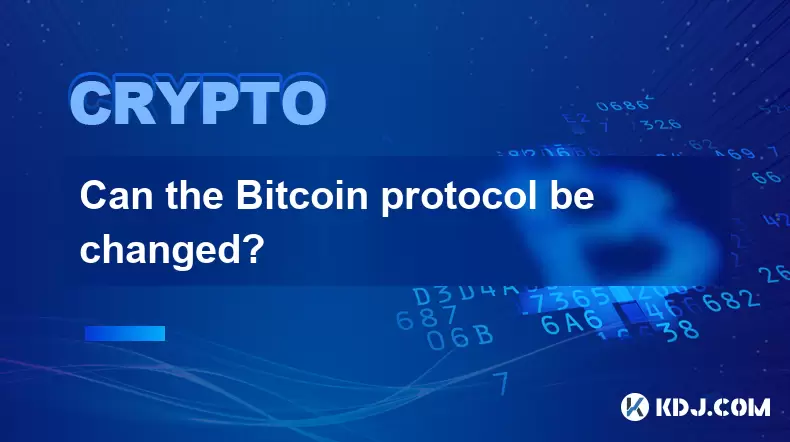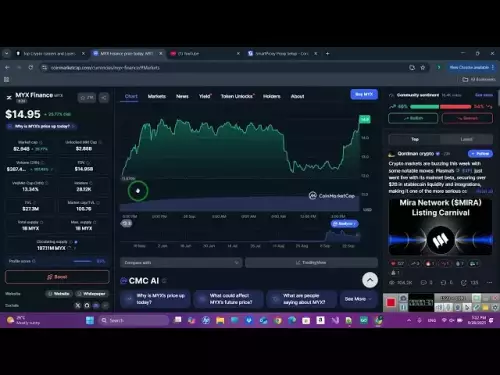-
 bitcoin
bitcoin $109547.008142 USD
0.04% -
 ethereum
ethereum $4011.838726 USD
-0.05% -
 tether
tether $1.000402 USD
-0.01% -
 xrp
xrp $2.798606 USD
0.88% -
 bnb
bnb $970.877944 USD
1.39% -
 solana
solana $202.237275 USD
-0.95% -
 usd-coin
usd-coin $0.999673 USD
0.00% -
 dogecoin
dogecoin $0.229294 USD
-1.15% -
 tron
tron $0.336370 USD
-0.45% -
 cardano
cardano $0.777260 USD
-1.66% -
 hyperliquid
hyperliquid $45.503019 USD
1.73% -
 ethena-usde
ethena-usde $1.000362 USD
0.01% -
 chainlink
chainlink $20.785303 USD
-1.10% -
 avalanche
avalanche $28.755822 USD
-0.11% -
 stellar
stellar $0.358303 USD
-0.48%
What is the difference between a simple and an exponential moving average for BTC?
In BTC trading, the Exponential Moving Average (EMA) reacts faster to price changes than the Simple Moving Average (SMA), making it ideal for short-term strategies.
Jul 07, 2025 at 02:51 am

Understanding the Concept of Moving Averages
In cryptocurrency trading, especially for Bitcoin (BTC), traders rely heavily on technical indicators to make informed decisions. Among the most popular tools are moving averages, which help smooth out price data over a specified period. The two primary types used in BTC analysis are the Simple Moving Average (SMA) and the Exponential Moving Average (EMA). While both serve similar purposes—identifying trends and potential reversal points—they differ significantly in their calculation methods and responsiveness to price changes.
The Simple Moving Average calculates the average price of BTC over a set number of periods by giving equal weight to each price point. For example, a 10-day SMA would sum up the closing prices from the past 10 days and divide that total by 10. This uniform weighting makes it less reactive to recent price movements.
How the Exponential Moving Average Differs
Unlike the SMA, the Exponential Moving Average assigns more weight to recent prices, making it more sensitive to current market conditions. This is particularly useful when analyzing volatile assets like BTC, where rapid price shifts can signal important trend changes.
To calculate the EMA, traders start by computing the SMA for the initial value. Then, they apply a weighting multiplier to emphasize newer data points. The formula involves multiplying the most recent price by the weighting factor and adding it to the previous EMA value multiplied by one minus the weighting factor. As a result, the EMA reacts faster to price fluctuations, offering traders quicker signals than the SMA.
Application in BTC Trading Strategies
Both SMAs and EMAs are widely used in BTC trading strategies, such as crossovers and trend confirmation. However, due to its sensitivity, the EMA is often preferred in short-term trading environments where timing is crucial.
- Traders using a 50-day EMA might look for it to cross above a 200-day EMA as a bullish signal.
- Conversely, a 50-day SMA crossing below a 200-day SMA could indicate a bearish trend.
Because the EMA gives more importance to recent price action, it may generate earlier entry or exit signals compared to the SMA, which lags more behind the current price.
Volatility Considerations in BTC Markets
Bitcoin's price is known for its high volatility, making the choice between SMA and EMA even more critical. In fast-moving markets, lagging indicators like the SMA may not provide timely insights, potentially causing missed opportunities or late exits.
In contrast, the EMA adapts quickly to sudden price swings, which can be beneficial during sharp corrections or explosive rallies. For instance, during a rapid BTC rally from $30,000 to $40,000 within a few weeks, the EMA would reflect this change sooner than the SMA, allowing traders to ride the momentum more effectively.
However, this responsiveness also means that the EMA can produce more false signals in choppy or sideways markets. Traders must use additional tools, such as volume indicators or support/resistance levels, to filter out noise and confirm genuine trends.
Visualizing SMA vs. EMA on BTC Charts
When plotted on a BTC chart, the visual difference between SMA and EMA becomes apparent. During strong uptrends or downtrends, the EMA line tends to stay closer to the actual price, while the SMA trails further behind.
- On a BTC daily chart, a 20-period EMA will hug the price curve more tightly than a 20-period SMA.
- This behavior helps traders identify short-term pullbacks within larger trends more accurately.
Many platforms like Binance, TradingView, or CoinMarketCap allow users to overlay both indicators simultaneously. By doing so, traders can visually compare how each reacts under different market conditions and adjust their strategies accordingly.
Selecting the Right Indicator for Your BTC Strategy
Ultimately, the decision between SMA and EMA depends on individual trading styles and timeframes. Long-term investors might favor the SMA for its simplicity and smoother trend lines, while active day traders or swing traders may prefer the EMA for its quick reaction to new information.
Some traders combine both indicators to create a hybrid strategy. For example, using the SMA for long-term trend identification and the EMA for entry/exit timing. This dual approach leverages the strengths of both tools while mitigating some of their weaknesses.
It’s also essential to backtest any strategy involving moving averages before applying it in live markets. Historical data on BTC price movements can reveal how well these indicators perform under various scenarios, helping traders fine-tune their parameters for optimal results.
Frequently Asked Questions
Q: Can I use both SMA and EMA together for BTC analysis?Yes, many traders combine SMA and EMA to get a clearer picture of the trend. For instance, the SMA can show the broader direction, while the EMA provides timely trade signals.
Q: Which moving average is better for intraday BTC trading?The EMA is generally preferred for intraday trading because of its sensitivity to recent price changes, which helps capture short-term momentum.
Q: How do I choose the right period for SMA or EMA when analyzing BTC?Commonly used periods include 9, 20, 50, and 200. Shorter periods offer more responsiveness, while longer periods provide smoother, long-term trend signals. It depends on your trading timeframe and strategy.
Q: Do moving averages work well in all BTC market conditions?Moving averages perform best in trending markets but can give misleading signals in sideways or consolidating phases. Combining them with other tools like RSI or MACD improves accuracy.
Disclaimer:info@kdj.com
The information provided is not trading advice. kdj.com does not assume any responsibility for any investments made based on the information provided in this article. Cryptocurrencies are highly volatile and it is highly recommended that you invest with caution after thorough research!
If you believe that the content used on this website infringes your copyright, please contact us immediately (info@kdj.com) and we will delete it promptly.
- BTC Price Wobbles as Bitcoin ETFs See Inflows, Ethereum ETFs Bleed: What's the Deal?
- 2025-09-28 22:25:17
- Bitcoin Price Eyes Reversal? Analyst Weighs In
- 2025-09-28 22:25:17
- Shiba Inu Price Predictions: Navigating the Meme Coin Maze
- 2025-09-28 22:30:02
- GOAT Network's $GOATED: Navigating the Post-Listing Plunge
- 2025-09-28 22:30:02
- Riding the Altcoin Wave: Can Mutuum Finance Turn Pennies into Dollars Before Bitcoin's Peak?
- 2025-09-28 22:30:02
- Tapzi: Skill-to-Earn Revolution in Web3 Gaming
- 2025-09-28 22:30:13
Related knowledge

Why is Bitcoin considered a revolutionary technology?
Aug 12,2025 at 08:29pm
Decentralization and the Elimination of Central AuthoritiesThe core innovation behind Bitcoin lies in its decentralized architecture, which fundamenta...

Why is Bitcoin considered a revolutionary technology?
Aug 10,2025 at 07:42pm
Decentralized Architecture and Trustless TransactionsBitcoin is considered revolutionary because it introduced a decentralized architecture that opera...

What are the key features of Bitcoin?
Aug 10,2025 at 02:50am
Decentralization and Peer-to-Peer NetworkOne of the most defining characteristics of Bitcoin is its decentralized nature. Unlike traditional financial...

Can the Bitcoin protocol be changed?
Aug 07,2025 at 01:16pm
Understanding the Bitcoin ProtocolThe Bitcoin protocol is the foundational set of rules that govern how the Bitcoin network operates. It defines every...

Can the Bitcoin protocol be changed?
Aug 11,2025 at 01:01am
Understanding the Bitcoin Protocol StructureThe Bitcoin protocol is the foundational set of rules that govern how the Bitcoin network operates. These ...

What happens to Bitcoin transactions once they are confirmed?
Aug 09,2025 at 05:22am
Understanding Bitcoin Transaction ConfirmationWhen a Bitcoin transaction is initiated, it is broadcast to the network and placed in a pool of unconfir...

Why is Bitcoin considered a revolutionary technology?
Aug 12,2025 at 08:29pm
Decentralization and the Elimination of Central AuthoritiesThe core innovation behind Bitcoin lies in its decentralized architecture, which fundamenta...

Why is Bitcoin considered a revolutionary technology?
Aug 10,2025 at 07:42pm
Decentralized Architecture and Trustless TransactionsBitcoin is considered revolutionary because it introduced a decentralized architecture that opera...

What are the key features of Bitcoin?
Aug 10,2025 at 02:50am
Decentralization and Peer-to-Peer NetworkOne of the most defining characteristics of Bitcoin is its decentralized nature. Unlike traditional financial...

Can the Bitcoin protocol be changed?
Aug 07,2025 at 01:16pm
Understanding the Bitcoin ProtocolThe Bitcoin protocol is the foundational set of rules that govern how the Bitcoin network operates. It defines every...

Can the Bitcoin protocol be changed?
Aug 11,2025 at 01:01am
Understanding the Bitcoin Protocol StructureThe Bitcoin protocol is the foundational set of rules that govern how the Bitcoin network operates. These ...

What happens to Bitcoin transactions once they are confirmed?
Aug 09,2025 at 05:22am
Understanding Bitcoin Transaction ConfirmationWhen a Bitcoin transaction is initiated, it is broadcast to the network and placed in a pool of unconfir...
See all articles









































































